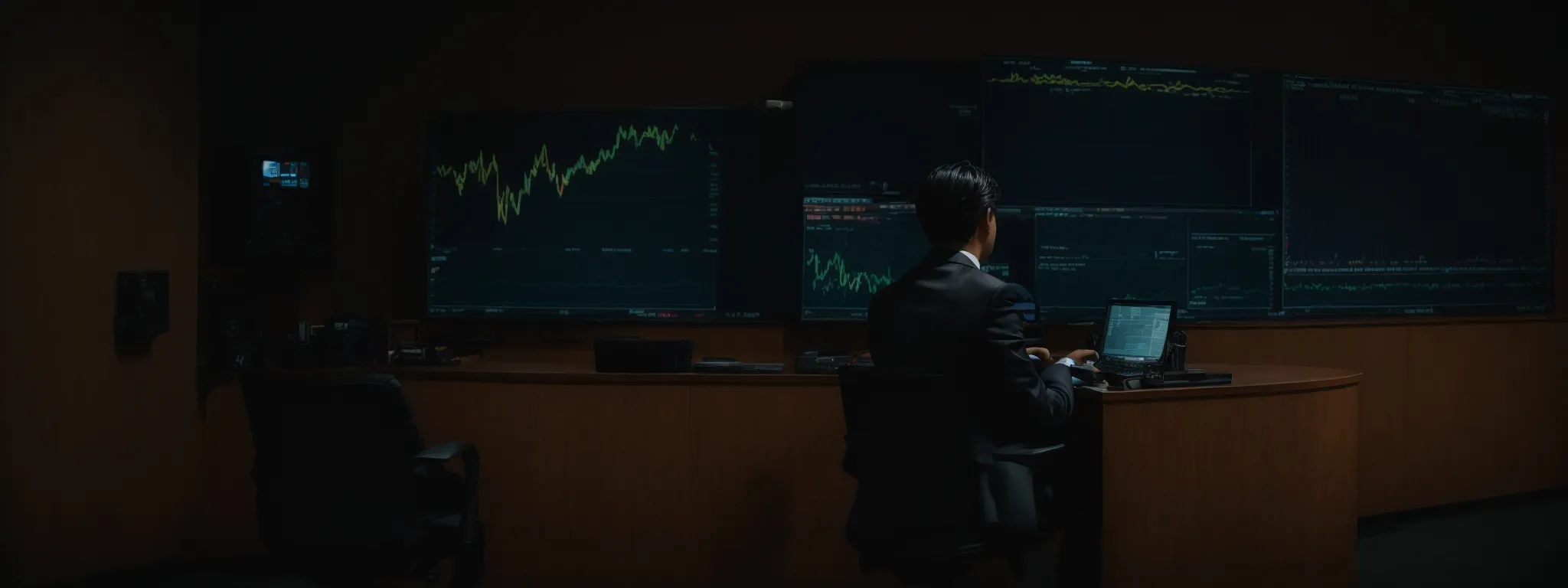Digital Marketing vs Traditional Marketing
Comparing Digital Marketing and Traditional Marketing Strategies The marketing landscape is in constant flux, with digital tactics gaining dominance over traditional methods that once ruled the advertising […]
Comparing Digital Marketing and Traditional Marketing Strategies
The marketing landscape is in constant flux, with digital tactics gaining dominance over traditional methods that once ruled the advertising world.
As businesses navigate through the myriad of options, understanding the nuances between digital marketing – channeled through search engines, social media, and email marketing – and traditional avenues like television commercials, radio ads, and print advertising becomes pivotal.
The shift towards digital has been steered by the precision targeting and analytics that allow marketers to reach their audience more effectively.
Yet, the tangible impact of a billboard or a magazine ad carries its own weight in a comprehensive marketing strategy.
In this article, we’ll explore how integrating both horizons can enhance a brand’s presence and drive more nuanced consumer engagement.
Key Takeaways
- Digital Marketing Offers Precise Targeting and Real-Time Analytics for Effective Campaign Management
- Traditional Marketing Holds Value Through Tangible, Sensory Experiences That Build Brand Recognition
- The Agility of Digital Campaigns Allows for Rapid Adjustment to Consumer Behavior and Market Changes
- A Combined Approach With Both Digital and Traditional Strategies Can Maximize Audience Engagement
- Adapting to Technological Advancements and Consumer Preferences Is Essential for Successful Digital Marketing
Defining the Scope of Digital vs Traditional Marketing

The landscape of marketing has undergone a significant transformation with the ascent of digital platforms, drawing a distinct line between digital and traditional marketing strategies.
As businesses navigate the multi-faceted world of reaching their target audience, understanding the breadth and depth of each method becomes imperative.
Exploring the core concepts of digital marketing lays the groundwork for grasping its vast capabilities, from search engine optimization to social media engagement.
Simultaneously, outlining traditional marketing strategies clarifies the continued relevance of television, print ads, and radio broadcasts in connecting with consumers.
In setting the stage, this discourse will delve into the distinctive features, effectiveness, and adaptability of both digital marketing and traditional approaches, elucidating their roles in contemporary marketing campaigns.
Exploring the Core Concepts of Digital Marketing
Digital marketing eclipses traditional methods by offering precise targeting and real-time analytics, key benefits that Enhance the Relevance of Marketing Efforts. It interlaces various online channels, from search engines to social media, empowering businesses to reach a broad audience while also zoning in on specific demographics.
Utilizing tools like SearchAtlas SEO platform and LinkGraph’s digital marketing solutions, professionals can skillfully navigate the digital landscape. These resources help in crafting strategies that resonate with a target market, whether through impactful PPC Google Ads campaigns or compelling content marketing that converts viewers into loyal customers.
Outlining Traditional Marketing Strategies
Traditional marketing strategies harness the familiarity and tangible nature of physical media to foster connectivity with diverse consumer demographics. Employing time-tested tactics such as broadcast advertising and print ad placements, these methods benefit companies by fostering brand awareness and customer retention through mediums like television commercials, radio ads, and newspaper features.
At their core, these traditional channels capitalize on the established habits of consumers, integrating marketing communications into the steady flow of information consumed via magazine pages, billboard sightings, and direct mail. Even in a digital age, traditional marketing remains a formidable channel for reaching those parts of a target audience less inclined to online interactions, thus rounding out a comprehensive marketing plan.
Key Characteristics of Digital Marketing

In the realm of digital marketing, the efficacy of a campaign is often rooted in its ability to be customized and agile.
Each facet of digital strategy, from keyword targeting to content distribution, allows for an impressive malleability, shaping campaigns that speak directly to the nuances of a diverse clientele.
Digital marketers are empowered with tools like the SearchAtlas SEO platform, offering capabilities that cater to varied marketing goals.
Another pillar of digital transcendence lies in data-driven decision making, where measuring success pivots on the powerful insights gleaned from analytics.
These metrics reveal the true performance of digital marketing initiatives, steering subsequent actions towards greater return on investment and customer engagement.
Customization and Agility in Digital Campaigns
Digital campaigns thrive on their capacity for customization, enabling marketers to tailor their messaging and delivery to the unique preferences of their target audience. With dynamic content and personalized user experiences, digital marketing initiatives like those supported by SearchAtlas SEO platform swiftly adapt to consumer behaviors and trends.
Agility in digital campaigns is paramount as it allows for quick adjustments in response to analytical feedback or shifts in the marketing landscape. Utilizing tools such as LinkGraph’s Content Planner Tool, marketers can recalibrate their strategies rapidly, ensuring relevance and efficacy in an ever-changing digital milieu.
Measuring Success With Analytics in Digital Marketing
Success in digital marketing is often quantified by the wealth of data at marketers’ disposal. The digital realm offers unparalleled insights, with the ability to track nearly every interaction, allowing marketers to optimize their campaigns and achieve a profound return on investment.
LinkGraph’s Digital Marketing Solutions and SearchAtlas SEO platform exemplify the precision of analytics in digital campaigns, facilitating a comprehensive analysis of user engagement, conversion rates, and overall campaign health. This data-centric approach ensures that every digital marketing effort is accountable and performance-driven.
Defining Traditional Marketing Tactics

The realm of traditional marketing tactics, with its enduring presence, invites businesses to leverage recognition and prestige built over time.
Embracing techniques such as print, broadcast, and direct mail, this marketing sphere offers a tactile and ubiquitous way to disseminate information and connect with a broad audience.
These methods standably test the integrity and impact of marketing content over longer periods, unlike the fleeting nature often characteristic of digital content.
By scrutinizing the durability and influence of traditional marketing, companies can discern how printed brochures, television ads, and personalized letters sustain consumer attention and contribute to a brand’s lasting legacy.
Understanding Print, Broadcast, and Direct Mail
Print, broadcast, and direct mail embody the essence of traditional marketing tactics by utilizing tangible formats to captivate a diverse audience. While print and direct mail find their strength in physical touchpoints, such as magazine spreads and flyers, broadcast reaches into the homes and daily lives of consumers through radio and television channels.
Broadcast advertising in particular, with its unique blend of audio and visual elements, creates memorable experiences that can enhance brand recall and foster consumer loyalty. Additionally, direct mail allows a more personalized approach, often leading to increased engagement from recipients who feel a direct connection to the advertised product or service.
- Print marketing capitalizes on the familiar and tangible nature of printed materials.
- Broadcast adverts leverage sight and sound to weave narratives that resonate with wide audiences.
- Direct mail offers a targeted, personal touch, potentially increasing consumer interaction.
Assessing the Longevity of Traditional Marketing Content
Traditional marketing content garners its longevity through the intrinsic value associated with physical materials. Consumers often retain print advertising like brochures or flyers, which can serve as continual reminders of a brand or product well beyond the initial contact.
This enduring quality positions traditional marketing materials as valuable assets in a company’s promotional toolkit: they ensure sustained visibility and help maintain a connection with the client base over time:
- Physical brochures may be saved or displayed in homes or offices, keeping the brand in view.
- Billboard advertisements secure extended exposure to commuters and passersby.
- Magazine and newspaper ads season and accrue value with the publication’s shelf life.
Moreover, the tactile sensation of handling a printed piece can fortify brand recognition and foster an emotional bond between consumer and company, aspects less pronounced in the ephemeral nature of digital counterparts.
Advantages of Digital Marketing Over Traditional Methods

The digital era has redefined the matrix of marketing, offering unparalleled advantages over traditional methods.
The efficacy of these modern approaches is underscored by their innate ability to home in on targeted segments with pinpoint accuracy, revolutionizing how businesses address their potential clientele.
Additionally, digital platforms facilitate a two-way conversation, ushering in an era of customer engagement and interaction that transcends the one-sided presentations of past advertising practices.
By employing strategies that leverage these aspects, companies can enhance their outreach, galvanizing their brands in the minds of their audience more effectively than ever before.
Targeting Specific Audiences With Precision
Digital marketing thrives on the sophistication of its targeting capabilities, surpassing traditional methods by engaging specific individuals within a broader audience. Companies wield digital tools like LinkGraph and SearchAtlas to dissect vast demographics, pinpointing potential customers with remarkable accuracy, which empowers them to craft highly relevant and tailored messages.
Accuracy in targeting not only conserves marketing budgets by focusing resources on the individuals most likely to convert but also elevates the customer experience by presenting them with offers and content that align with their preferences and behaviors. This precision stands as a testament to the technological finesse inherent in modern digital marketing solutions.
Generating Interactions and Engaging Customers Online
The digital marketing realm excels in spawning interactive experiences that invite customer participation and dialogue. Through methods such as social media marketing and email campaigns, companies encourage ongoing conversations, making consumers active participants in the brand narrative.
Engaging customers online fosters a dynamic relationship that traditional marketing media rarely achieves: company and consumer evolve from disconnected entities into conversational partners. This interaction not only enhances customer experience but also provides businesses with invaluable insights into consumer preferences and behaviors.
- Social media platforms become stages for real-time customer engagement and brand advocacy.
- Email marketing initiatives stimulate direct dialogue, enhancing the personal connection with the audience.
- Interactive websites with chat functions and forums welcome customer feedback and foster community building.
Limitations of Digital Marketing Strategies

While digital marketing presents a multitude of advantages, its strategies are not without their share of limitations.
As the terrain of online platforms continues to evolve with rapid technological advancements, businesses must remain vigilant to keep pace with the changing landscape and consumer preferences.
Amidst this dynamic environment, marketers face the dual challenge of breaking through the clutter of message saturation and navigating around the growing prevalence of ad-blockers.
These challenges necessitate innovative approaches to ensure marketing messages resonate with and reach their intended audience.
Navigating Changes in Technology and Platforms
In the whirlwind of technological innovation, digital marketing professionals face the imperative task of keeping abreast with the latest digital platforms and tools. As technology evolves, the strategies that once yielded success may suddenly become obsolete, compelling marketers to adapt swiftly to maintain a competitive edge.
To remain relevant, it is crucial for businesses to harness digital marketing solutions like those offered by LinkGraph and SearchAtlas, which anticipate and incorporate the nuances of technological progress. These platforms provide stability and guidance amidst the frequent shifts in digital marketing, empowering marketers to stay ahead of the curve.
Facing Ad-Blockers and Message Saturation
The proliferation of ad-blockers represents a significant hurdle for digital marketers, directly challenging the visibility of PPC campaigns and banner ads. As users seek an unobstructed online experience, the effectiveness of traditional digital ads wanes, prompting marketers to explore alternative avenues for client engagement.
Message saturation compounds the complexity of reaching target audiences in the digital sphere, with countless brands vying for consumer attention across multiple channels. This crowded landscape necessitates strategic creativity and precision in messaging to cut through the noise and establish meaningful connections with potential customers.
Effectiveness of Traditional Marketing Today

In evaluating the enduring significance of traditional marketing within the digital era, businesses must acknowledge the distinctive strengths that continue to render it effective.
Traditional marketing channels possess an inherent perceived credibility due to their longevity and the physical presence of materials which consumers can touch, feel, and experience.
These attributes provide a sense of authenticity and trustworthiness that, despite the rise of digital means, retain their value in establishing brand reputation and consumer confidence.
Furthermore, the sensory experiences evoked by traditional advertising through tangible materials resonate with audiences on a different level, often leaving a lasting impression that transcends digital interaction.
This introductory exploration serves as a prelude to a deeper understanding of how traditional marketing strategies, in their unique capacity to engage the senses and foster credibility, maintain their position within a comprehensive marketing strategy.
Perceived Credibility of Traditional Marketing Channels
Traditional marketing channels command a robust level of trust that often comes with physical interaction and established history. For instance, a printed brochure or a radio ad tends to carry with it a legacy of authenticity, bolstering consumers’ confidence in the legitimacy of the advertised product or service.
The sheer physicality of traditional marketing materials can reinforce the perceived stability and reliability of a brand, distinguishing it amidst the transient and sometimes dubious nature of online advertising. Such qualities of traditional channels contribute meaningfully to the foundation of strong brand reputation and respectability in the eyes of consumers.
Impact of Sensory Experiences in Traditional Advertising
The resonance of traditional advertising is in part due to its ability to engage the human senses, a feat that purely digital strategies may find challenging to match. The tactile nature of a glossy magazine ad, the distinct smell of a freshly printed newsletter, or the sound of a catchy jingle in a radio advertisement create multi-sensory experiences that can leave a deeper imprint on consumers’ memories.
This multi-sensory engagement is not just peripheral; it plays a critical role in forging emotional connections and augmenting the impact of a marketing message. Such sensory interactions can make a brand more memorable, often inspiring a sense of nostalgia or comfort that helps nurture long-term brand loyalty:
- Print ads invite touch and create visual appeal with their textures and colors.
- Radio commercials leverage sound, rhythm, and voice to imbue messages with personality and urgency.
- Physical mailers combine texture, visuals, and personalization to stand out in the recipient’s hand.
Through these sensory channels, traditional marketing captures attention and reinforces brand identity in a manner that can have enduring effects on consumer perception and behavior.
Integrating Digital and Traditional Marketing for Optimal Reach

In today’s multifaceted marketplace, an orchestrated approach, unifying digital marketing and traditional marketing strategies, stands as the most effective avenue for companies aiming to maximize their reach and resonance with diverse audiences.
This synergy requires a deliberate melding of cutting-edge online tactics with time-honored offline methods, creating an enveloping campaign that leverages the strengths of each to capture a wider spectrum of consumer attention.
Exploration of robust strategies that bridge the two realms, as well as assessment of case studies that exemplify triumphant integrated marketing campaigns, are pivotal in understanding how to construct a marketing plan that is both comprehensive and compelling.
Strategies for Combining Digital and Traditional Efforts
To ensure an effective marketing mix, companies should look to amplify their digital efforts with traditional touchpoints. A Unified Strategy might see a social media marketer orchestrating online campaigns that encourage engagement through hashtags, while paralleling these digital efforts with television ads that solidify the campaign’s message, reaching an audience that enjoys content in a traditional broadcast format.
On the flip side, traditional marketing strategies can be augmented with digital tactics to drive deeper customer engagement. For instance, a direct mail campaign could include a QR code that, when scanned, leads to an Online Landing Page, seamlessly transitioning the customer from a tangible print ad to a digital experience:
- A magazine spread might feature a unique URL or social media handle to bridge the gap between the print ad and the company’s online presence.
- Television commercials can promote interactive online tools, guiding viewers to engage with the brand on digital platforms.
- Radio advertising might appeal to listeners to follow a brand on social media, thus connecting a traditional listener to digital conversations.
Case Studies of Successful Integrated Marketing Campaigns
One notable integrated campaign is Coca-Cola’s ‘Share a Coke’ initiative, which began with personalized bottles featuring people’s names and expanded across digital platforms. The campaign ignited consumer interaction by encouraging customers to share their experiences on social media, generating a massive wave of user-generated content and reaching an audience both online and offline.
In the realm of fashion, Target’s 2015 Lilly Pulitzer collaboration merged vibrant print designs with a clever social media presence. This alignment saw traditional advertising through in-store visuals and catalogs, while the digital campaign utilized Instagram influencers and Twitter teasers, resulting in a highly successful launch that caused both the website and physical stores to experience unprecedented traffic and sales.
Conclusion
Comparing digital and traditional marketing strategies reveals the strengths and optimal applications of each approach within the modern marketing landscape.
Digital marketing offers precision targeting, real-time analytics, and engagement through dynamic online platforms.
Traditional marketing, with its enduring tactile and sensory experiences, continues to hold value in building credibility and brand loyalty.
An integrated marketing strategy that combines the agility of digital campaigns with the trusted presence of traditional methods can maximize reach and resonance across diverse audiences.
Businesses that embrace both digital advancements and the reliability of traditional media can craft comprehensive campaigns that effectively connect with consumers, drive engagement, and bolster brand awareness in today’s competitive marketplace.



















































































